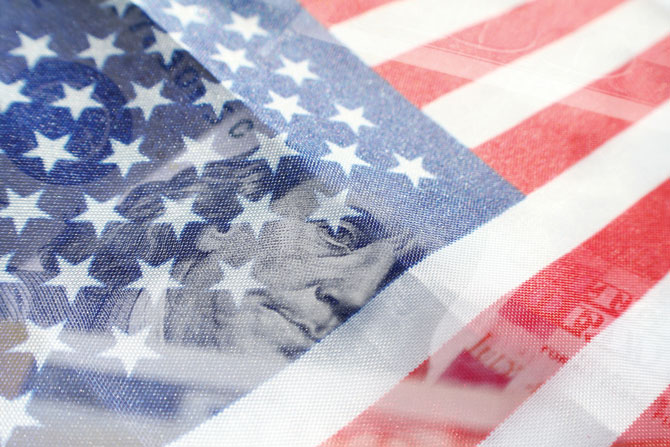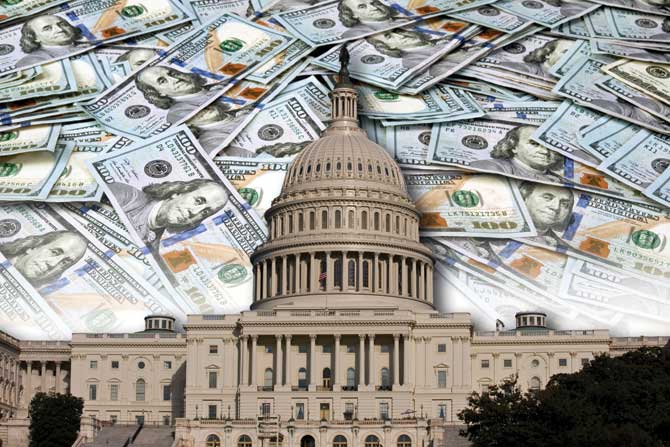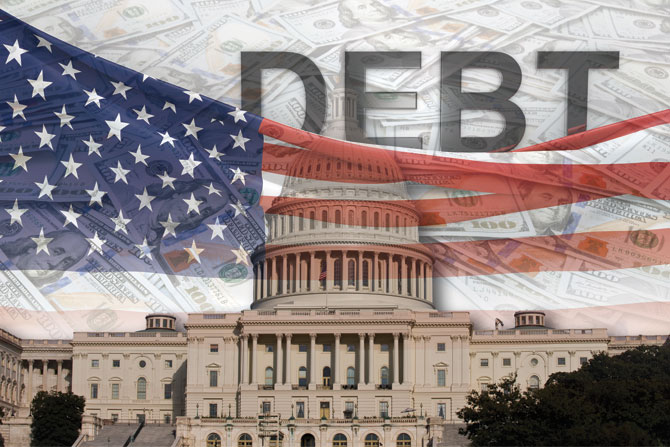“Modern Economic Theory” (MET) has drawn increasing interest as the federal government accumulates record deficits and the national debt grows into the trillions of dollars. Traditional economic theory says deficits are bad because they cause inflation and impose unfair burdens on future taxpayers to repay the debts. MET says federal deficits do not matter. They are just accounting. Twenty years of record deficits with no inflation is the first hint MET may be right. If anything, interest rates are too low. MET says the federal government’s primary role is maintaining the optimal balance of supply and demand in the overall economy, not balancing government collections and spending.
MET says the most basic economic factor is the capacity of the economy to supply goods and services. Depressions and recessions happen – indeed are defined – as farms and factories and other businesses remain idle due to lack of demand and lack of money to spend. The government’s goal should be to manage the level of demand by regulating the money supply.
MET evolved due to a change in money itself. Consider from where money comes. The rules are different for the federal government because it creates the money and everyone else spends it. The government still taxes and borrows, but those now play different roles in fiscal management. For the federal government to spend money, Congress must first pass an appropriations bill and then the Treasury directs the Federal Reserve to issue the payments. The Fed creates the money with a few keystrokes that add numbers to the payees’ bank accounts. Taxes are used to inhibit or encourage certain kinds of spending, draw money out of the economy if it overheats, and redistribute wealth. U.S. government securities continue to be sold because they are useful to entities needing very safe investments. Ultimately, federal deficits are just accounting, not real debts.
That was not always the case. Balancing the budget was necessary when the dollar was, theoretically, at least, based on the “gold standard.” Each dollar used to be backed by gold or silver. The paper money – then named gold and silver certificates – was technically a receipt for a certain amount of gold or silver. Creating additional paper money would only devalue the existing currency if the amount of gold or silver remained the same. In theory, spending power was based on the amount of gold backing the currency, not the amount of currency circulating in the economy and the amount of goods and services it could buy.
The federal government didn’t even issue paper money until the Civil War. Before that war, paper money was issued by state-chartered banks. It was a weak system that worked because there was so little commerce compared to today’s economy. Most people lived on farms and grew or made most of what they used and consumed.
The federal government began issuing paper dollars in the 1860s when a single national currency was needed to pay for the war. Dollars were needed after the war because so many people left the farms for factory jobs in the cities and required a reliable currency to pay rent and buy food and clothing. The gold standard was adopted to build trust in the new currency.
From the beginning, the gold standard was more an illusion than reality. The amount of gold backing the dollar was always less than the total amount of dollars in circulation, and that ratio declined over time to virtual insignificance. The government’s gold reserves were a symbol of value, while the real value was a developing belief in the economy and the competent management of money by the government.

The gold standard ended in 1971 when the French government began demanding the U.S. redeem dollars for gold. President Nixon responded by revoking the gold standard and closing the gold window. By then, the dollar no longer needed gold backing, leaving the French with the option of exchanging their dollars for other currencies instead. In effect, this showed that the dollar had become so well established, relative to other currencies at least, that its value was presumed and given no thought by anyone except economists at the Federal Reserve and U.S. Treasury. Dollars are now just a utility in the most successful economy in history. The value of a dollar is directly measured by the value of all the goods and services it can buy.
In terms of federal fiscal policy, this evolution of priorities from balancing the budget to managing the money supply was the beginning of modern economics. The key questions today are whether enough money is flowing through the economy to sustain it at full capacity and full employment and, conversely, whether there is too much money, which could cause inflation.
Underlying all of this is the one economic principle that has never changed. Basic economics says the healthiest economy is equally balanced between supply and demand. A drop in demand causes a recession or depression. Too much demand increases prices and causes inflation, and inflation can wreck an economy. A successful economic policy maintains the right balance.
This transition of priorities began in the Great Depression when a few economists and businesspeople questioned the need to balance the federal budget. Utah native and First Security Bank Chairman Marriner Eccles, who became the first chairman and the “father” of the modern Federal Reserve, made his reputation in Washington initially by encouraging Congress to run a deficit to reverse the effects of the Depression. He said the main problem causing the Depression was “the velocity of money,” meaning how much and how fast money was moving through the economy. British economist John Maynard Keynes came to the same conclusion around the same time. But their model still retained the notion of a balanced budget by repaying the debt resulting from deficits with surpluses collected after the economy recovered. MET takes that a step further by considering budget balance irrelevant.
The deficits in the early 1930s worked but were too small to restore the economy fully. There was a constant concern over the debts. By 1937, the federal government went back to a balanced budget and the depression quickly returned. When WWII began, the government ran considerable deficits to bring the economy up to full capacity to supply the war. By 1945, the true measure of the nation’s economic capacity was that the U.S. was producing half of all of the goods in the world. A good measure of the nation’s industrial capacity was that the U.S. Navy, seriously outnumbered in the first months of the Second World War, was bigger than the combined navies of every other nation when the war ended. The key to avoiding an economic collapse when military spending was cut after the war was enacting the GI Bill to provide returning soldiers with money to buy houses and go to college. That helped maintain overall spending by directing it to nonmilitary goods and services.
The key questions today are whether enough money is flowing through the economy to sustain it at full capacity and full employment and, conversely, whether there is too much money, which could cause inflation.
Another crucial economic principle is that avoiding inflation is essential because a healthy economy requires stable asset values. Inflation devalues the relative buying power of currency by increasing the cost of goods and services. That benefits debtors by enabling them to pay their debts with money worth less than when they became indebted. It works fine for building equity in a house over 30 years but makes extending credit difficult or impossible when inflation rates are volatile.
That matters because credit drives most of the economy today. In the past, cash was used for all but the largest purchases, such as houses and cars. Today payment in cash is rare and credit is used for most purchases, even the most mundane. Credit has significantly expanded demand and added to the overall prosperity we have enjoyed during the postwar period.
Modern economics focuses on maintaining supply chains. That is especially important because supplying goods and services is what creates jobs. When the supply side contracts, businesses fail, unemployment rises, and a vicious cycle begins. It is as simple as people buying items or not. Items include houses or rent, food, clothing, cars, and education. All supply chains – except government spending – end with a consumer purchase. The government’s primary tool to prevent contractions is to keep the money flowing and support personal income through job programs and grants when needed.

The government continues to borrow amounts equal to the deficit, but it could just issue the money. The government can issue money to pay all of its debts whenever they come due. But even that is unnecessary. The Federal Reserve has independent authority to buy bonds and securities and could pay off all outstanding government bonds without an appropriation by buying them, then paying itself or just writing off the debt. The Fed is in the unique position of having the unlimited capacity to buy securities and no necessity to make a profit. That is how a central bank is supposed to work.
Taxes and borrowings have become more important as tools to manage how much money flows through the economy. If there is a disruption in demand due to a pandemic or problem in the credit markets, the government can inject more money into the economy. This would maintain demand without causing inflation, as long as the money supply does not exceed the supply of goods and services.
Taxes, along with other actions by the Fed, such as managing interest rates, can inject new money or draw excess money out of the economy. However, to work best, tax decreases should favor lower-income people. They will spend the additional money, which is crucial to increasing demand. Wealthy people tend to save the extra money they get from a tax decrease.
Deficit hawks see the main flaw in the current deficit model as the extent to which interest on government debt is overwhelming the budget. To manage this successfully, the government first needs to understand what amount of government debt the economy needs and how much debt needs to be circulating to help the Fed manage the money supply. It is another supply and demand equation. The economy uses a certain amount of government debt for various purposes. Suppose the supply of government debt was reduced. In that case, it might create excess demand for other securities, which would enable issuers such as companies and local governments to sell their securities for lower rates, which would undermine the Fed’s ability to manage interest rates.
Another issue is emerging that is harder to manage. The total economy does not just measure supply and demand. Inflation can happen in specific markets even though the overall economy has record low inflation. A good example is housing. Too much credit in the early 2000s created too much demand. That caused a huge bubble to burst in 2008, bringing about the Great Recession. Even after tightening credit standards, housing costs are once again rising at excessive and unsustainable rates in many parts of the nation.
The biggest possible flaw in this system is that politicians control it. We must trust them to pull money out of the economy when it begins to inflate, and one way to do that is to raise taxes.
The biggest possible flaw in this system is that politicians control it. We must trust them to pull money out of the economy when it begins to inflate, and one way to do that is to raise taxes. In effect, modern federal budgeting shifts taxation from collection before spending to a cleanup role after the spending. And that should often include increasing taxes if federal spending begins overstimulating the economy.
What could possibly go wrong?
Mr. George Sutton served as the Utah Deputy Commissioner of Financial Institutions from 1983 to 1987 and as Commissioner of Financial Institutions from 1987 to 1992. He served as president and CEO of one industrial bank and helped organize several others. He has served on several boards of directors, including Glacier Bancorp and Glacier Bank, Synchrony Bank, the Utah Housing Finance Agency, the Conference of State Bank Supervisors, the Utah Symphony, the Utah Association of Financial Services, GMAC Capital Corporation, WebBank and Community Nursing Services.










